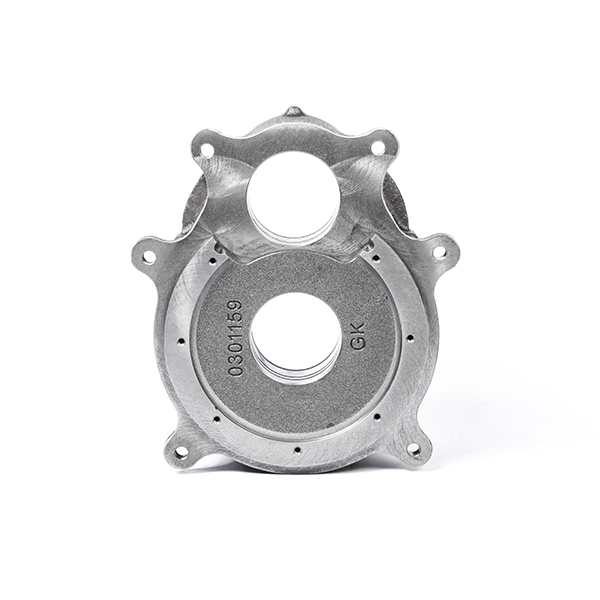Mobile:+86-311-808-126-83
Email:info@ydcastings.com
Casting Techniques for Motor Housing Components in Manufacturing Industry
Understanding Motor Housing Casting A Comprehensive Overview
Motor housing casting is a crucial process in the manufacturing of electrical motors, which are vital components in various industrial applications. The casting process involves the pouring of molten metal into a mold to create complex shapes that are integral to a motor's structure and functionality. In this article, we will explore the significance of motor housing casting, the materials used, the casting techniques, and the benefits it offers to the manufacturing industry.
Importance of Motor Housing
The motor housing serves several critical functions in an electric motor. It protects the internal components from environmental factors such as dust, moisture, and mechanical damage. Additionally, the housing contributes to the overall thermal management of the motor by dissipating heat generated during operation. The design of the housing must accommodate the motor's performance requirements while ensuring durability and reliability.
Materials Used in Casting
The choice of materials for motor housing casting is imperative for ensuring strength, longevity, and efficiency. Common materials include
1. Aluminum Alloys Aluminum is frequently used due to its excellent corrosion resistance, lightweight properties, and good thermal conductivity. Aluminum castings can be produced with intricate designs and thin walls, which is advantageous for compact motor designs.
2. Cast Iron Traditionally, cast iron has been a popular choice for motor housings due to its high strength and durability. It offers excellent vibration damping characteristics, making it suitable for heavy-duty applications. However, its weight can be a disadvantage in applications where lightweight solutions are preferred.
3. Magnesium Alloys These materials are increasingly being explored for motor housings due to their superior strength-to-weight ratio. Magnesium is lighter than aluminum and has excellent casting properties, making it suitable for high-performance motors.
4. Composite Materials Advances in technology have introduced composite materials that can provide significant weight savings and enhanced performance characteristics. They are typically used in specialized applications where high strength and lightweight properties are paramount.
Casting Techniques
The manufacturing of motor housing typically employs several casting techniques, including
1. Sand Casting This is one of the oldest and most common methods. A mixture of sand, clay, and water is used to create molds. The molten metal is poured into these molds to create the housing. Sand casting is highly versatile and cost-effective, suitable for both small and large production runs.
motor housing casting

2. Die Casting In this process, molten metal is injected under pressure into a steel mold, or die. Die casting allows for high-precision and smooth surface finishes, making it ideal for mass production of motor housings.
3. Investment Casting This method involves creating a wax pattern that is coated in a high-temperature material to form a mold. Once the mold is created, the wax is melted away, leaving a cavity for the metal. Investment casting offers high precision and is suitable for complex geometries.
4. Shell Molding This technique combines sand casting with the benefits of a shell mold, offering improved dimensional accuracy and surface finish. It is particularly useful for producing smaller casts with intricate designs.
Benefits of Motor Housing Casting
The casting process presents numerous benefits to manufacturers
1. Cost Efficiency Bulk production through casting reduces manufacturing costs significantly, especially for complex products that would be labor-intensive through other means.
2. Design Flexibility Casting allows for the creation of intricate shapes that would be challenging or impossible to achieve through machining.
3. Material Optimization Manufacturers can choose materials that best suit their specific application needs, allowing for enhanced performance and durability.
4. Reduced Waste Casting generates less material waste compared to subtractive manufacturing processes, making it a more sustainable option.
5. Scalability The casting process can be scaled up or down, accommodating varying production volumes without sacrificing quality or performance.
Conclusion
Motor housing casting is a fundamental aspect of producing reliable and efficient electric motors. With advancements in materials and casting techniques, manufacturers can create durable, lightweight, and efficient motor housings that meet the needs of a rapidly evolving technological landscape. As industries continue to leverage electric motors for automation and sustainability, the importance of effective casting processes will only grow. Understanding and implementing efficient casting techniques will be vital for companies looking to stay competitive in the market.
-
Impeller Technology That Powers Precision in Pump SystemsNewsMay.22,2025
-
Valve Durability Begins with Quality Cast Iron ComponentsNewsMay.22,2025
-
Performance Cooling with Advanced Automobile Water Pump SolutionsNewsMay.22,2025
-
How Motor Housing and Oil Pans Shape Engine PerformanceNewsMay.22,2025
-
How Metal Castings Drive Modern Manufacturing EfficiencyNewsMay.22,2025
-
Exploring the Engineering Behind Valve Body CastingsNewsMay.22,2025











